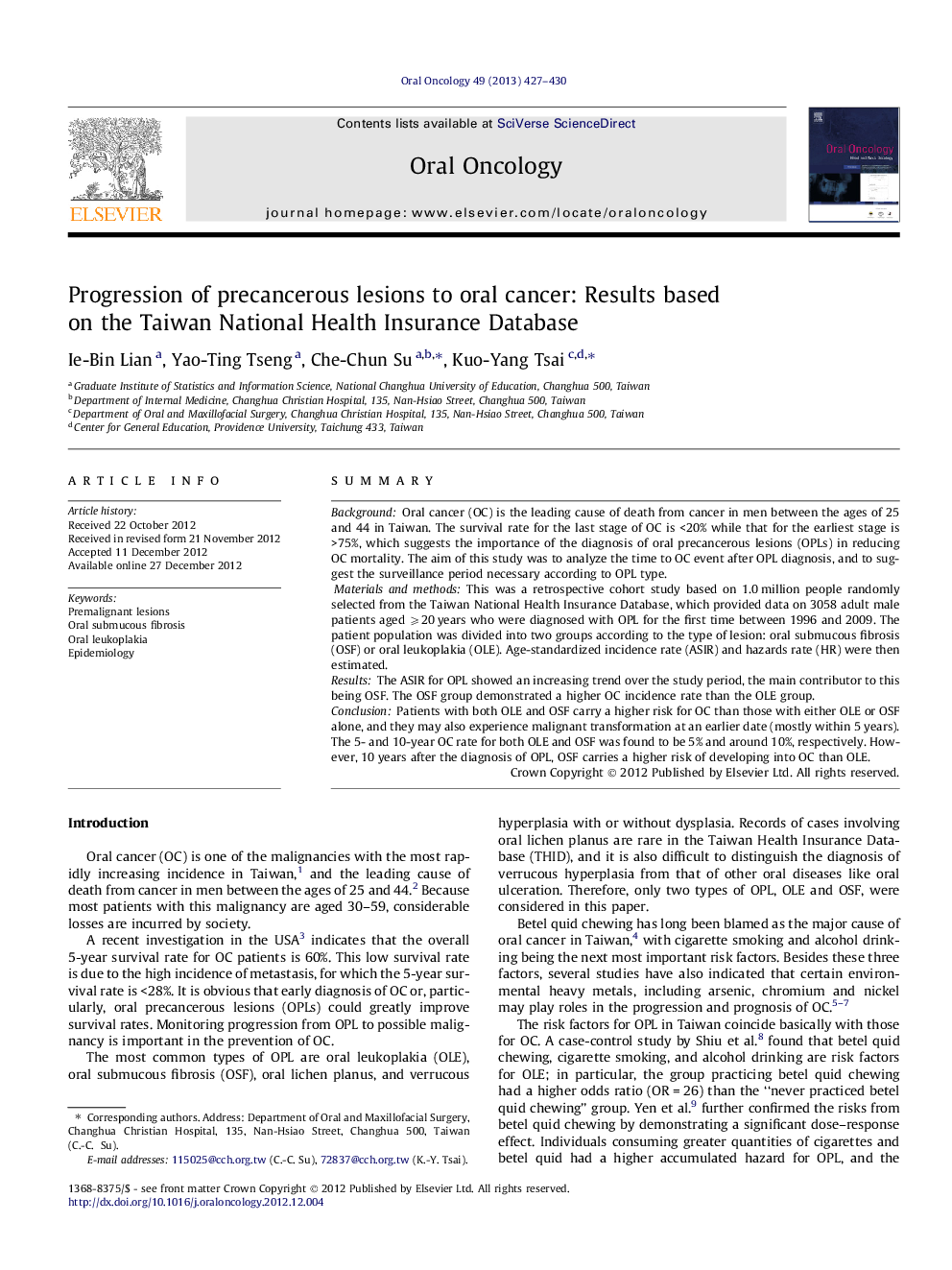| Article ID | Journal | Published Year | Pages | File Type |
|---|---|---|---|---|
| 3164271 | Oral Oncology | 2013 | 4 Pages |
SummaryBackgroundOral cancer (OC) is the leading cause of death from cancer in men between the ages of 25 and 44 in Taiwan. The survival rate for the last stage of OC is <20% while that for the earliest stage is >75%, which suggests the importance of the diagnosis of oral precancerous lesions (OPLs) in reducing OC mortality. The aim of this study was to analyze the time to OC event after OPL diagnosis, and to suggest the surveillance period necessary according to OPL type.Materials and methodsThis was a retrospective cohort study based on 1.0 million people randomly selected from the Taiwan National Health Insurance Database, which provided data on 3058 adult male patients aged ⩾20 years who were diagnosed with OPL for the first time between 1996 and 2009. The patient population was divided into two groups according to the type of lesion: oral submucous fibrosis (OSF) or oral leukoplakia (OLE). Age-standardized incidence rate (ASIR) and hazards rate (HR) were then estimated.ResultsThe ASIR for OPL showed an increasing trend over the study period, the main contributor to this being OSF. The OSF group demonstrated a higher OC incidence rate than the OLE group.ConclusionPatients with both OLE and OSF carry a higher risk for OC than those with either OLE or OSF alone, and they may also experience malignant transformation at an earlier date (mostly within 5 years). The 5- and 10-year OC rate for both OLE and OSF was found to be 5% and around 10%, respectively. However, 10 years after the diagnosis of OPL, OSF carries a higher risk of developing into OC than OLE.
